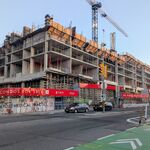J T CUNNINGHAM
Senior Member
King St., 1901
Note the plethora of Telegraph/Hydro wires, they being a major hindrance during the 1904 Great Toronto Fire.
Regards,
J T
Note the plethora of Telegraph/Hydro wires, they being a major hindrance during the 1904 Great Toronto Fire.
Regards,
J T

























